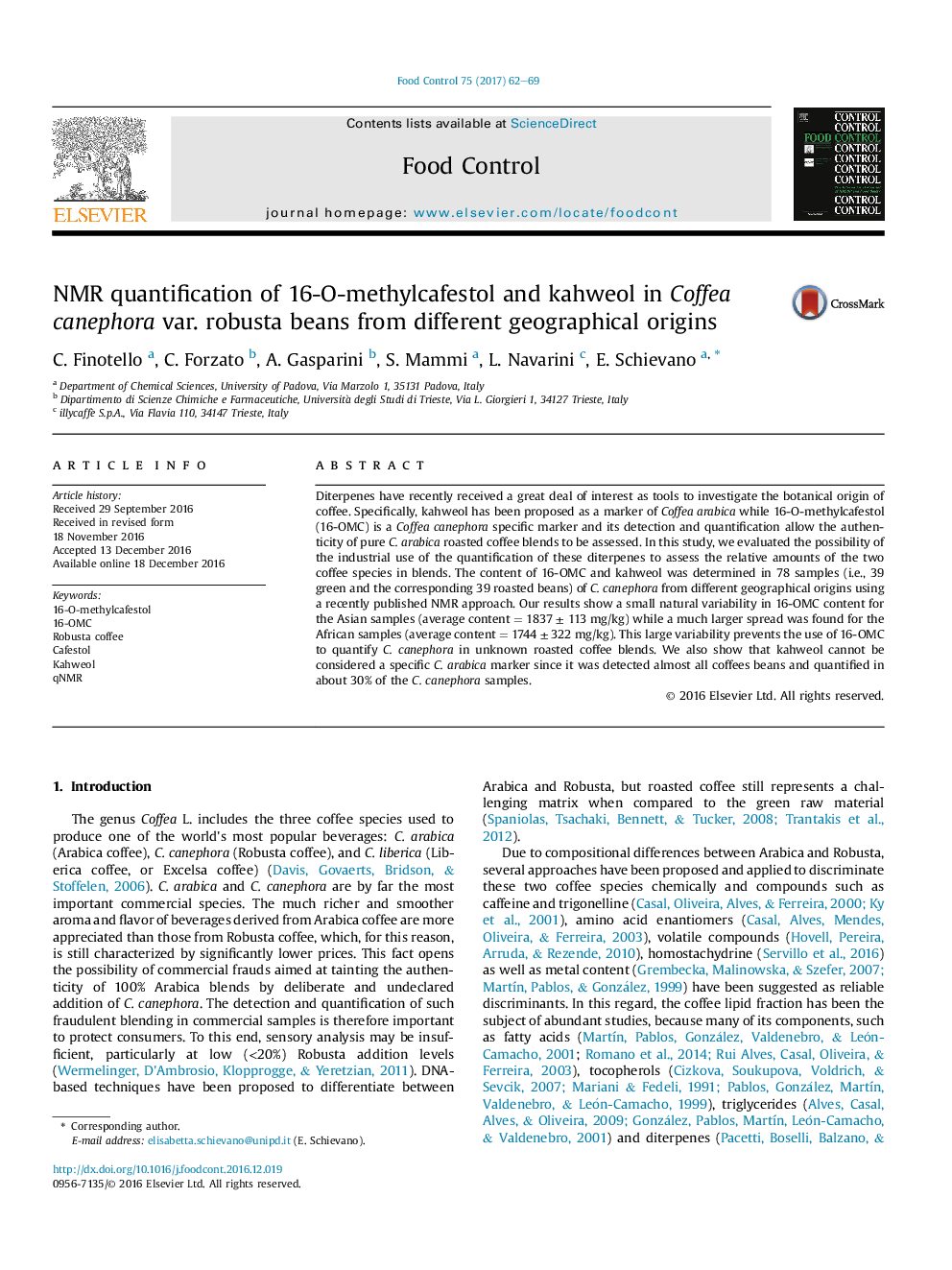| Article ID | Journal | Published Year | Pages | File Type |
|---|---|---|---|---|
| 5767391 | Food Control | 2017 | 8 Pages |
â¢The variability of 16-OMC and of other diterpenes on 39 C. canephora samples of different geographical origins was tested.â¢Asian C. canephora samples show a smaller natural variability in 16-OMC content with respect to the African ones.â¢The large variability in 16-OMC content prevents the quantification of C. canephora in unknown roasted coffee blends.
Diterpenes have recently received a great deal of interest as tools to investigate the botanical origin of coffee. Specifically, kahweol has been proposed as a marker of Coffea arabica while 16-O-methylcafestol (16-OMC) is a Coffea canephora specific marker and its detection and quantification allow the authenticity of pure C. arabica roasted coffee blends to be assessed. In this study, we evaluated the possibility of the industrial use of the quantification of these diterpenes to assess the relative amounts of the two coffee species in blends. The content of 16-OMC and kahweol was determined in 78 samples (i.e., 39 green and the corresponding 39 roasted beans) of C. canephora from different geographical origins using a recently published NMR approach. Our results show a small natural variability in 16-OMC content for the Asian samples (average content = 1837 ± 113 mg/kg) while a much larger spread was found for the African samples (average content = 1744 ± 322 mg/kg). This large variability prevents the use of 16-OMC to quantify C. canephora in unknown roasted coffee blends. We also show that kahweol cannot be considered a specific C. arabica marker since it was detected almost all coffees beans and quantified in about 30% of the C. canephora samples.
